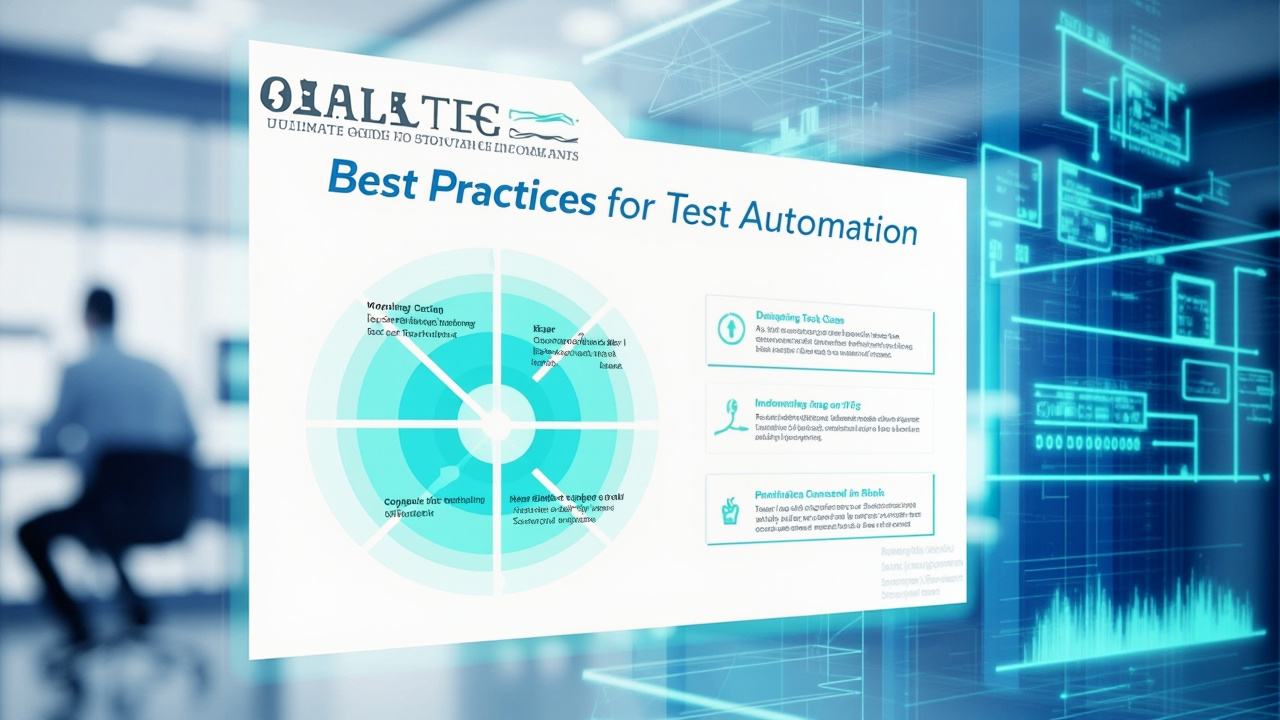In the ever-evolving world of software development, ensuring that applications function flawlessly is more crucial than ever. As development cycles accelerate and applications grow in complexity, traditional software testing methods often find themselves lagging. The consequences of inadequate testing can be dire, leading to costly bugs, security vulnerabilities, and dissatisfied users. But fear not, for this comprehensive guide will delve deep into the multifaceted world of software testing, providing you with insights, strategies, and tools to elevate your testing game.
Software testing is not just a checkbox in the development process; it’s a critical component that ensures the reliability, security, and performance of applications. Yet, with the increasing complexity of software systems, testers face numerous challenges. How can teams keep pace with rapid releases while maintaining high quality? What are the best practices to ensure comprehensive test coverage? And how can modern AI tools, like GenQE, help streamline the testing process?
In this ultimate guide, we’ll explore these questions and more. From understanding the fundamentals of software testing to implementing cutting-edge AI-driven tools, this article will equip you with the knowledge you need to navigate the complexities of software testing with precision and confidence. So, let s embark on this journey to mastering the art of software testing.
Understanding the Basics: What is Software Testing?

Software testing is a process that ensures a software application operates as intended. It involves executing a program or application with the intent of identifying bugs, verifying that the software meets specified requirements, and ensuring that it delivers a satisfactory user experience. But why is software testing so critical, and what are its core components?
The Significance of Software Testing
At its core, software testing aims to deliver a quality product that meets user expectations and business requirements. By identifying defects early in the development process, testing helps prevent costly fixes down the road. Moreover, robust testing enhances user satisfaction by ensuring smooth functionality, security, and performance.
“Without rigorous software testing, even the most innovative application can become a liability.”
Types of Software Testing
There are various types of software testing, each serving a specific purpose. Unit testing focuses on individual components, ensuring they function correctly in isolation. Integration testing evaluates the interaction between integrated units. System testing assesses the entire system’s compliance with requirements, while acceptance testing ensures the software meets business needs.
Other testing types include performance testing, which evaluates speed and scalability, and security testing, which identifies vulnerabilities. Each of these testing types plays a vital role in delivering high-quality software.
The Software Testing Life Cycle (STLC)
The STLC comprises several phases, each with specific objectives and deliverables. It begins with requirement analysis, followed by test planning, test case development, environment setup, test execution, and test cycle closure. Understanding the STLC helps teams systematically approach testing, ensuring thoroughness and efficiency.
The Challenges of Modern Software Testing

As software systems grow in complexity, so do the challenges associated with testing them. Rapid development cycles, diverse testing environments, and the need for comprehensive coverage create a perfect storm for testers. Let’s explore these challenges in detail.
The Pace of Development
With the rise of Agile and DevOps methodologies, development cycles have become shorter and more iterative. While this accelerates innovation, it also puts immense pressure on testing teams to deliver quick and accurate results. Traditional testing methods often struggle to keep up, leading to a reliance on automation and AI-driven solutions.
Diverse Testing Environments
Today’s applications must function seamlessly across a myriad of devices, operating systems, and browsers. This diversity complicates the testing process, requiring extensive coverage to ensure consistent performance. Testers must also consider the impact of different network conditions and user behaviors, further adding to the complexity.
Ensuring Comprehensive Coverage
Achieving comprehensive test coverage is a perennial challenge. Testers must balance the need for thoroughness with the constraints of time and resources. Missing critical test cases can result in undetected defects, while over-testing can delay releases. Striking this balance requires a strategic approach to test planning and execution.
“In the quest for comprehensive test coverage, strategic planning is key.”
Strategies for Effective Software Testing

To overcome the challenges of modern software testing, teams must adopt effective strategies that streamline processes and enhance outcomes. Here are some proven approaches to elevate your testing efforts.
Adopting Agile and DevOps Practices
Agile and DevOps methodologies emphasize collaboration, continuous integration, and iterative development. By integrating testing into these practices, teams can achieve faster feedback loops and more reliable releases. Continuous testing, a core component of DevOps, ensures that testing occurs throughout the development cycle, catching defects early and reducing rework.
Emphasizing Test Automation
Test automation is a game-changer in modern software testing. By automating repetitive and time-consuming tasks, teams can focus on more complex testing activities. Automation tools, such as Selenium and Appium, facilitate the execution of test scripts across various platforms, increasing efficiency and accuracy.
Leveraging AI-Powered Tools
AI-powered tools, like GenQE, are revolutionizing the testing landscape. By leveraging machine learning algorithms, these tools can analyze vast amounts of data, optimize test case generation, and intelligently prioritize test execution. GenQE’s self-healing capabilities, for example, automatically adjust test scripts in response to changes, reducing maintenance efforts.
“AI-driven tools bring a new level of intelligence and adaptability to software testing.”
Best Practices for Test Automation

Test automation is a cornerstone of modern software testing, offering significant benefits in terms of speed, accuracy, and coverage. However, to maximize its potential, teams must adhere to best practices that ensure efficient and effective automation.
Designing Maintainable Test Cases
Creating maintainable test cases is crucial for long-term success. Test cases should be modular, reusable, and easy to understand. By adopting a data-driven approach, teams can separate test logic from test data, making it easier to update and maintain test cases as requirements evolve.
Implementing Continuous Integration
Continuous integration (CI) is a best practice that involves integrating code changes into a shared repository frequently. Automated tests are run as part of the CI process, providing immediate feedback on code quality. Tools like Jenkins and GitHub Actions facilitate this process, enabling teams to catch defects early and ensure code stability.
Prioritizing Tests Based on Risk
Not all tests are created equal. Prioritizing tests based on risk ensures that critical areas are tested first, optimizing testing efforts. Risk-based testing involves assessing the likelihood and impact of potential failures, allowing teams to focus on high-impact defects. This approach aligns testing efforts with business priorities, maximizing value.
The Role of AI in Software Testing

Artificial intelligence is transforming the way software testing is conducted, offering new possibilities for efficiency and accuracy. By automating routine tasks and providing intelligent insights, AI empowers testers to focus on higher-level activities. Let’s explore the role of AI in software testing.
AI-Driven Test Generation
AI-driven test generation automates the creation of test cases, reducing the dependency on manual design. Tools like GenQE analyze software requirements, user behavior, and historical data to generate comprehensive test cases. This approach not only saves time but also improves test coverage and accuracy.
Intelligent Test Execution
AI enhances test execution by intelligently prioritizing test cases based on risk analysis. This ensures that critical areas are tested first, optimizing testing efforts and reducing the time to market. By focusing on high-impact defects, AI-driven execution enhances the overall quality of the software.
Self-Healing Automation
One of the most significant challenges in test automation is maintaining test scripts as the application evolves. AI-powered self-healing capabilities address this issue by automatically adjusting test scripts when changes occur. This reduces maintenance efforts and minimizes downtime, ensuring continuous and reliable testing.
“AI’s ability to adapt and learn makes it an invaluable ally in the quest for software quality.”
Ensuring Comprehensive Test Coverage

Comprehensive test coverage is essential to ensure that all aspects of an application are thoroughly tested. Achieving this level of coverage requires a strategic approach that considers various testing techniques and tools.
Diverse Testing Techniques
To achieve comprehensive coverage, teams must employ a diverse range of testing techniques. This includes functional testing, which verifies that the software performs its intended functions, and non-functional testing, which assesses aspects like performance, security, and usability. By combining these techniques, testers can ensure that all critical areas are covered.
Cross-Platform Testing
In today’s multi-device world, cross-platform testing is crucial. Applications must function seamlessly across different devices, operating systems, and browsers. Tools like GenQE provide extensive test coverage across web, mobile, APIs, and cloud environments, ensuring consistent performance and user experience.
Leveraging Historical Data
Historical data provides valuable insights into past defects and their causes. By analyzing this data, teams can identify patterns and predict potential issues. AI-powered tools like GenQE leverage machine learning algorithms to analyze historical data, providing proactive defect detection and preventing critical issues from reaching production.
The Future of Software Testing

As technology continues to evolve, the field of software testing is poised for significant transformation. Emerging trends and innovations promise to reshape the way we approach testing, making it more efficient, intelligent, and integrated.
The Rise of AI and Machine Learning
AI and machine learning are set to play an even more prominent role in software testing. As these technologies advance, they will enable more sophisticated test generation, execution, and analysis. AI-driven tools will continue to enhance efficiency, accuracy, and adaptability, making testing faster and more reliable.
Integration with DevOps and CI/CD
The integration of testing with DevOps and CI/CD pipelines will become more seamless. Automated testing will be an integral part of the development process, providing continuous feedback and ensuring code quality. This integration will facilitate faster release cycles and higher-quality software.
Emphasis on Security and Compliance
As cyber threats become more sophisticated, the emphasis on security and compliance testing will intensify. Testing teams will need to adopt advanced security testing techniques and tools to identify vulnerabilities and ensure compliance with industry standards.
“The future of software testing lies in the seamless integration of AI, automation, and security.”
Conclusion: Elevating Your Software Testing Journey

In this ultimate guide, we’ve navigated the complexities of software testing, exploring its core components, challenges, strategies, and future trends. As the software landscape evolves, testing teams must adapt and innovate to ensure high-quality applications that meet user expectations.
By adopting effective strategies, leveraging AI-powered tools like GenQE, and embracing emerging trends, teams can elevate their testing efforts and deliver reliable software at speed. As you continue your testing journey, consider exploring the tools and approaches discussed in this guide to enhance your processes and outcomes.
The world of software testing is vast and dynamic, offering endless opportunities for improvement and innovation. Embrace the journey, and let the insights gained from this guide empower you to achieve excellence in software quality.
“Software testing is not just a process; it’s a commitment to quality, innovation, and excellence.”
As you explore the tools and strategies discussed in this guide, consider how GenQE and other AI-powered solutions can enhance your testing process, ensuring robust software quality and faster time to market.
Discover More Innovative Solutions
Want to learn more about the tools and technologies discussed in this article? Explore how these innovations can be tailored to your specific needs and workflow requirements.
Our team of experts is available to answer your questions and provide personalized insights into how modern solutions like GenQE can address your specific challenges.
If the link above does not work, please visit: https://calendly.com/dm-csimplifyit/30min?month=2025-05